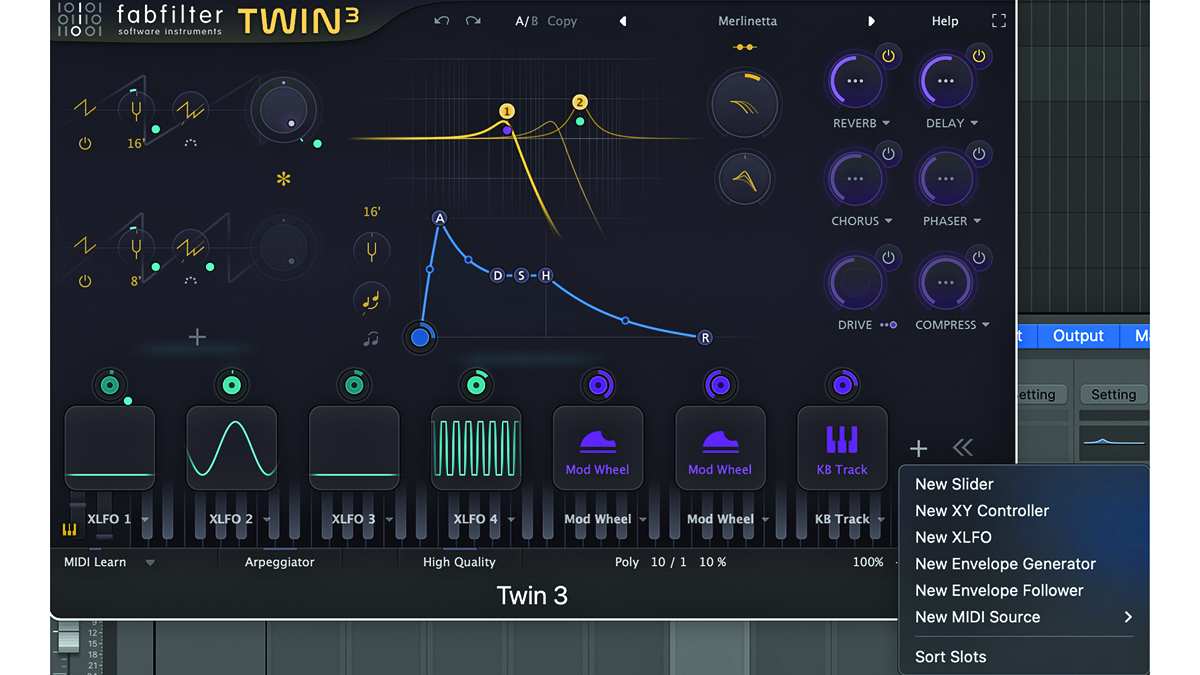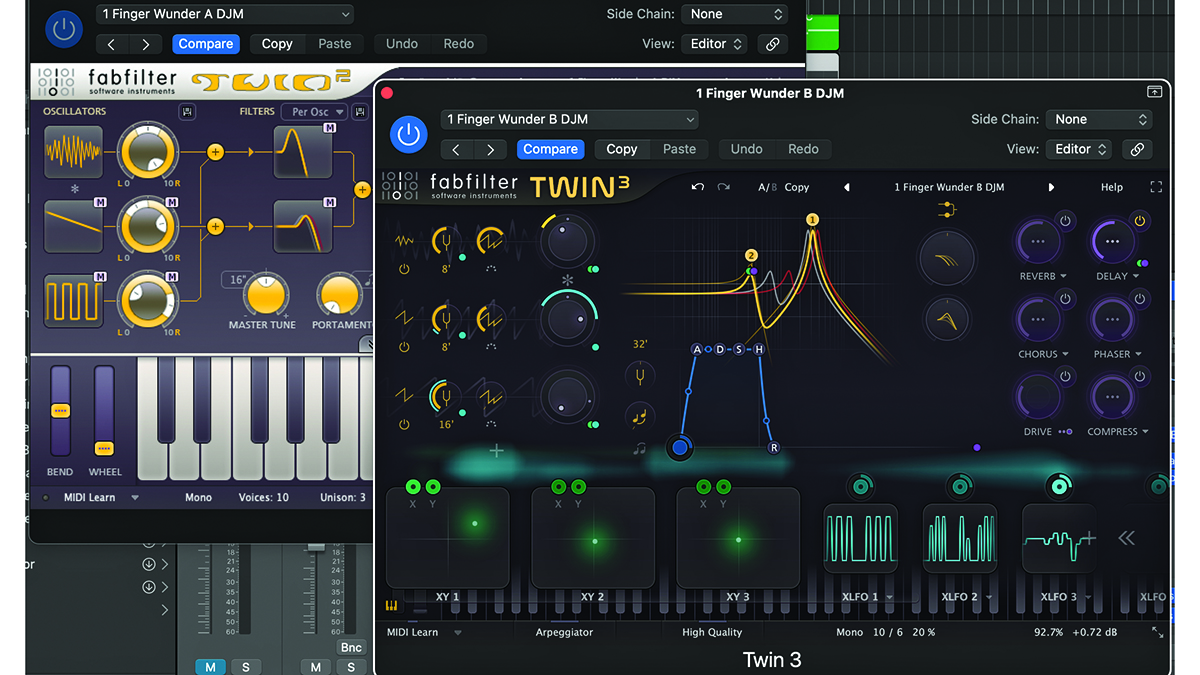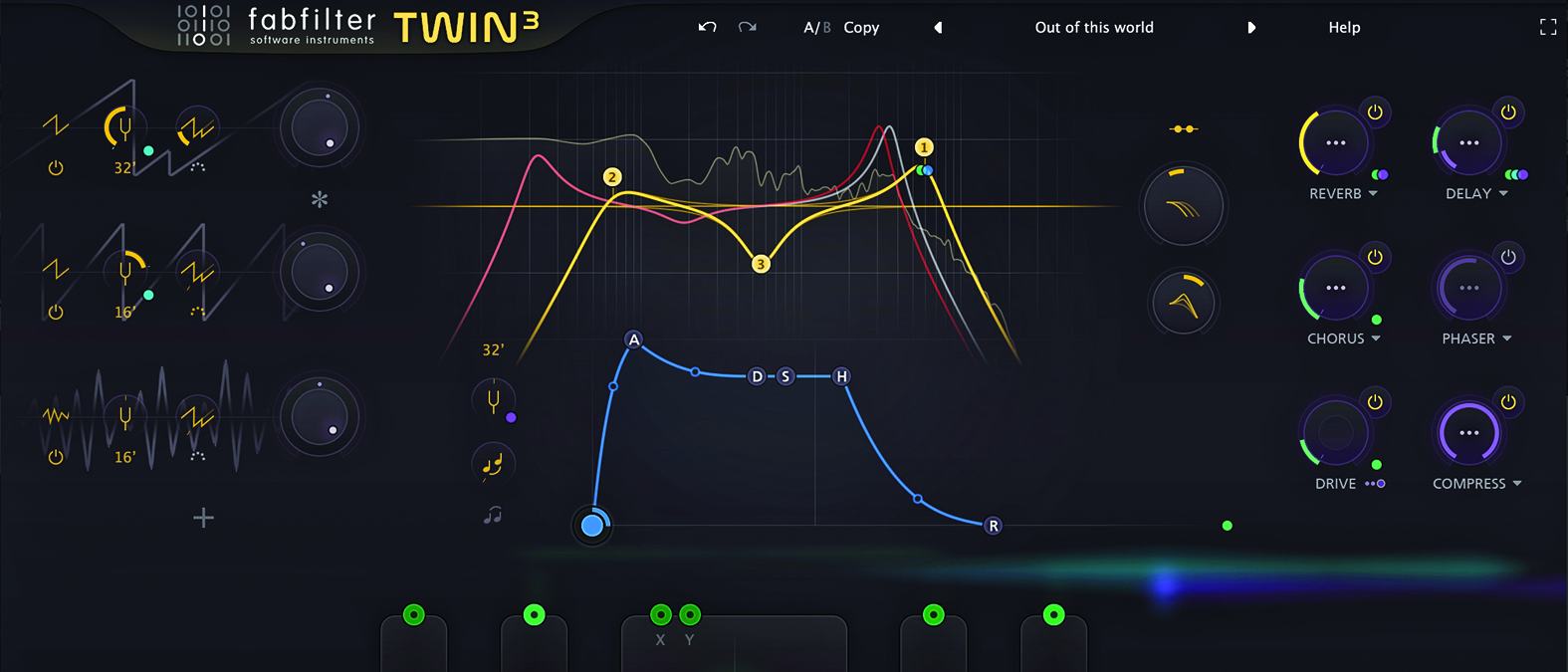MusicRadar Verdict
Twin 3 might have taken 14 years to appear, but it is a huge-sounding synth, a solid sound design tool and a fantastic update.
Pros
- +
Big, big sound.
- +
And a huge potential to create more.
- +
Lovely modulation system.
- +
Great hands-on tweaking options.
Cons
- -
Some features were slightly clearer to see on v2.
MusicRadar's got your back
FabFilter Twin 3: What is it?

Type: Virtual Analog Synth
Oscillators: 4
Filters: 4
FX Modules: 6
Buy at Plugin Boutique
Alongside Serum and Massive, Twin is one of the most common ‘favourite’ synths of the producers we talk to. Our first experience of it goes right back to its launch in 2005 – can it really be? – when we were instantly struck by its huge, often dance-friendly presets, easy workflow and high-quality sound. All things that its maker FabFilter has since become famous for. Twin 2 arrived in 2009 with extras aplenty, and now we have a completely refreshed version 3 (available as VST, VST3, AU, AAX and AudioSuite), a mere 14 years later.
Twin 3 has had a complete overhaul. There’s a totally redesigned GUI, improved workflow, more oscillators and filters, an all-new drag-and-drop modulation system, plus an added effects section. However, put it side-by-side with Twin 2, as we did (we still use the previous version) and you will recognise it as being of the Twin clan.

FabFilter Twin 3: Performance and verdict
As with Twin 2, oscillators are on the left, filters in the middle, modulation along the bottom and effects on the right. But everything about v3 screams ‘more, and more’. The effects get their own section, you can have up to four oscillators and filters, and the modulation and sound design options – see below – seem endless.

• KV331 Synthmaster One
It can go in different directions compared to Twin, but also features a similar feel and sound.
• Lennar Digital Sylenth1
A classic synth from the Twin 2 days, but still punches above its weight and well above that price.
The colourful design is very appealing and does update the previous version to FabFilter’s latest styling; it adheres to the look and feel of their family and is very 2023. However, we found some sections, like the modulation area, to be a little clearer on the previous incarnation.
Otherwise, not only does Twin 3 borrow the design aesthetic from other FabFilter plugins, but it also delivers its component filters and effects, so these are of very high quality. For each of the four filters, you can select three slope types, seven filter shapes and 11 characteristics. And the effects section is very well implemented, if not quite as fulsome as that you’ll find on other synths (although much improved over v2). You get six slots and clicking on each opens up other parameters to tweak.
We also like the extra Filter Frequency Peak and Offset controls to the right of the filter section. These enable you to change these values for all four of the filters simultaneously and can really add some supercharged drama.
It boasts huge sounds – but what synth doesn’t these days? It’s where you can take them that counts
At launch, FabFilter Twin stood proud as one of the few synths that delivered not just the analogue dance sounds of the era, but also other varied sonics. Version 3 certainly takes things up a few notches. It sounds every bit as good for dance sounds (and even includes a Best Of selection from Twin 2). The sounds are immense and as punchy as you like, but really this synth goes a lot further.
Which is just as well, because 14 years on, the dance/analogue thing is done by more softsynths than any other kind of synth out there, so there’s a lot of competition. However, Twin 3 really – and we mean really – excels on the kind of hands-on, real-time manipulation that we love; the kind of tweaking that has you reaching for the save button over and over, so on that score, this is a real winner.

Sound design and modulation
Twin 3 really is a sound design dream. Start on the left-hand side and simply introduce different oscillator types, sync values and tuning options by way of (usually) drop-down menus.
The filter section too lets you easily select from the options detailed in the main text, but the real fun happens in the modulation section. Here you can introduce sources like LFOs, envelopes, sliders or X-Y pads, or external MIDI sources (mod wheel, velocity, aftertouch etc). You can then use a fabulous drag-and-drop feature to link these sources to destinations. You could, for example, create an XY pad and use the X position to control the reverb. Once you click and drag on the X source, modulatable options are highlighted. If you then drag over the reverb, its Time and Brightness parameter options appear, so simply link to one to modulate it.
It’s a great system with pretty much-unlimited options to create complex and evolving sounds, and you’ll want to dive right in.
Fab-u-lous
Twin 3 boasts huge sounds, then… but what synth doesn’t these days? It’s where you can take them that counts, though, and in such an easy way that Twin becomes more of a sound design tool than a preset plunderer. A cracking update, then, and if you need a synth that punches through your mixes and explores new textures, it’s right here. Fab times three.
MusicRadar verdict: Twin 3 might have taken 14 years to appear, but it is a huge-sounding synth, a solid sound design tool and a fantastic update.
FabFilter Twin 3: The web says
"Twin 3 is packed with features, its interface is laid out so nicely, and its learning curve isn’t overly steep."
RouteNote Blog
FabFilter Twin 3: Hands-on demos
FabFilter
MusicMarketing TV
Composer Daniel Willett
Ave Mcree
FabFilter Twin 3: Specifications
- Virtual analog synth
- Four flexible oscillators
- Four filters
- Six FX modules
- Vast modulation system with a wealth of flexible source signal generators
- Drag-and-drop source/target routing
- macOS 10.13 or higher (64-bit only), AU or VST 2/3 host or Pro Tools, Apple Silicon, or Intel processor.
- Windows 11, 10, 8, 7 or Vista, 64-bit or 32-bit, VST 2/3 host or Pro Tools.
- Available in VST, VST3, Audio Units, AAX Native, and AudioSuite formats.
- Buy at Plugin Boutique
Computer Music magazine is the world’s best selling publication dedicated solely to making great music with your Mac or PC computer. Each issue it brings its lucky readers the best in cutting-edge tutorials, need-to-know, expert software reviews and even all the tools you actually need to make great music today, courtesy of our legendary CM Plugin Suite.
Brace yourself: Bryan Adams didn’t buy his first real six-string in a five and dime
“Nobody listens to one genre. I literally don’t know anybody who listens to one genre. You can be a fan of so many different artists at once”: Laufey on what Gen Z can teach the rest of us about how to appreciate music
Bon Iver - ranked: from Sable, Fable to For Emma, Forever Ago











